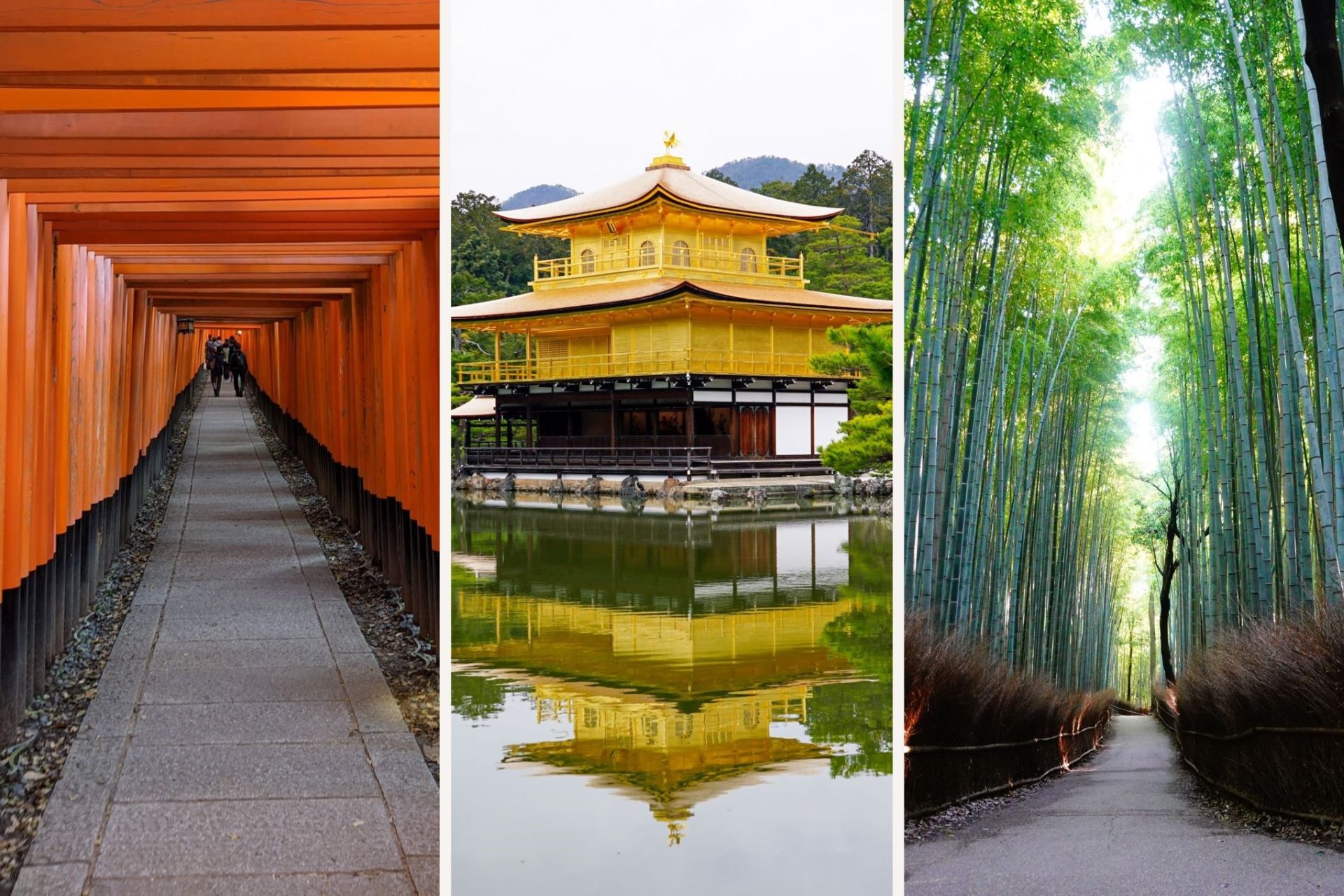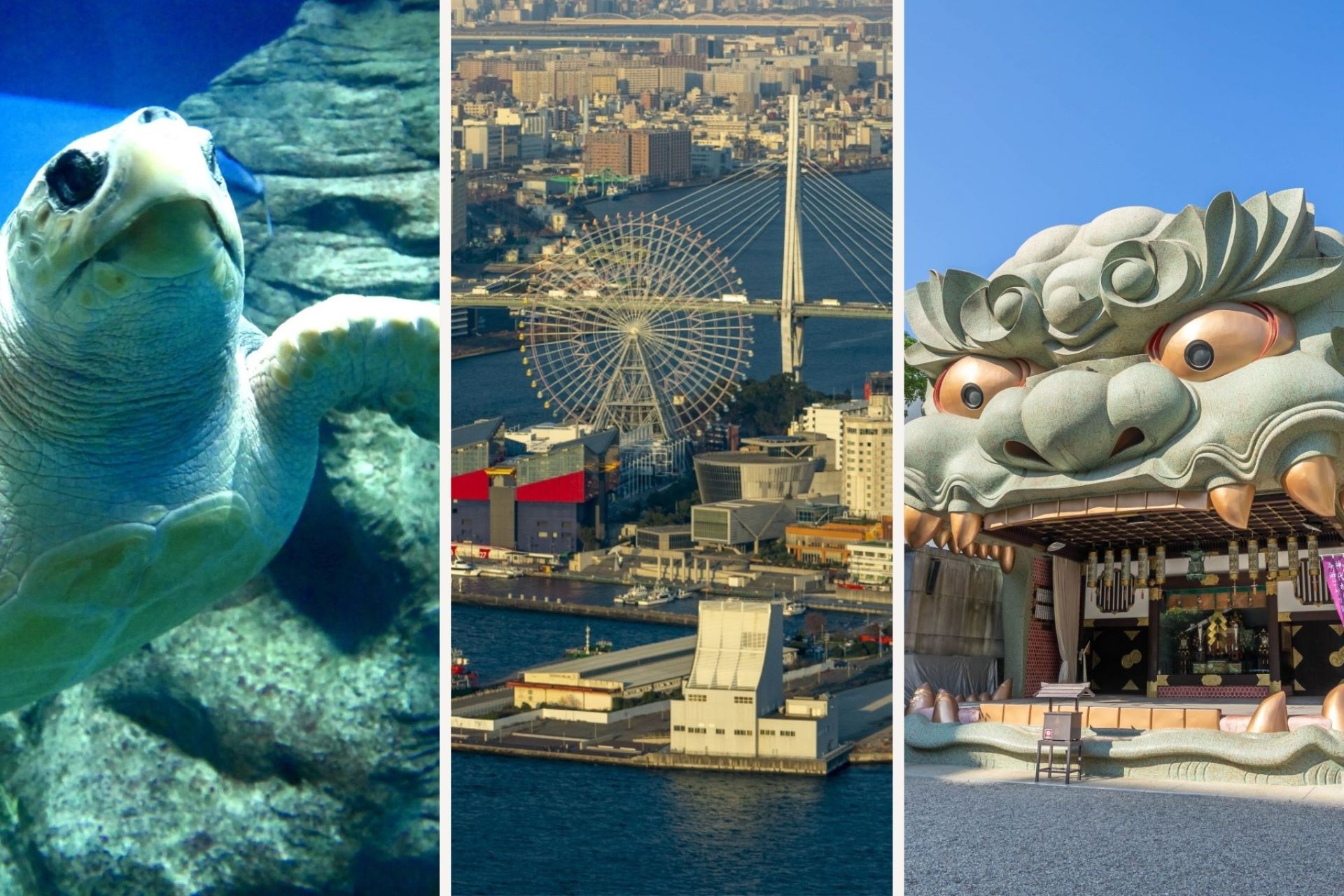10 Days Itinerary in Kansai
Explore Kansai: 10 Days of Discovery

Kansai could be very well considered as the cradle of Japanese civilization, uniquely distinguished by its rich history, culture, and natural beauty. If you want to discover everything it has to offer, this captivating 10-day journey will take you from the bustling streets of the country’s second Metropolis to the historic temples of the old imperial capital, through the beautiful landscapes of iconic sites to the sacred mountains.
This region boasts many UNESCO World Heritage Sites as well as many well preserved temples, shrines and traditional districts. And of course, a distinct culinary landscape, the pride of an entire region, among many other things awaiting you. So what are you waiting for?
<<Buy your Kansai 3-Day WIDE Area Excursion Pass here!>>
<<Buy your JR West Kansai Area Pass here!>>
<<Buy your bullet train tickets here!>>
For a complete overview of must-see spots in the Kansai region: Best Things to Do in Kansai
*Please note that this article contains affiliate links.
Day 1: Osaka

Ways to Move from Kansai International Airport (KIX)
7 Best Airport Taxi Services between Osaka and KIX/ITAMI
How to Get from Kansai International Airport (KIX) to Osaka
On your first day in Osaka, start early by exploring Dotonbori (道頓堀), a bustling area known for its vibrant street food scene. Here, you try local favorites like takoyaki (octopus balls) and okonomiyaki (savory pancakes) from popular street stalls.
Next, visit Osaka Castle (大阪城), a historic landmark with insights into Japan’s feudal past with exhibits of ancient armor and artifacts. The view from the top of the castle provides a panoramic look over Osaka, contrasting the old and modern elements of the city.
In the afternoon, you head to the Umeda Sky Building (梅田スカイビル) . Its architectural design features two towers connected by a floating garden observatory. The observatory offers expansive views of the city from its 39th floor, accessible via an open-air escalator ride.
As evening approaches, go to explore Shinsekai (新世界), an old neighborhood known for its retro charm. Here, dine in a traditional izakaya, trying kushikatsu (deep-fried skewered meats and vegetables), and enjoying the lively local atmosphere. Don’t miss the Tsutenkaku Tower!
Some more ideas around Osaka: 30 Best Things to Do in Osaka & 1 Day Itinerary in Osaka
Day 2: Osaka to Nara

Next, stroll through Nara Park (奈良公園), famous for its friendly and free-roaming deer. These deer are considered messengers of the gods in Shinto religion, and they calmly mingle with visitors, adding a unique charm to the park’s scenic pathways and tranquil atmosphere. Make sure to buy deer crackers from street vendors so you can feed these lovely messengers.
In the afternoon, you visit Kasuga Taisha (春日大社), Nara’s most celebrated shrine. Founded in 768 AD, the shrine is renowned for its lantern-lined paths. Hundreds of bronze and stone lanterns lead up to the main complex, which is beautifully decorated and a significant site for Shinto worship.
You can return to Osaka for the evening or stay overnight in Nara. Your next destination will be Kyoto so both places are conveniently close. If you want to enjoy a quiet evening, Nara may probably be better, otherwise Osaka has much more evening entertaining options.
More ideas around Nara: Best Things to Do in Nara & 1 Day Itinerary in Nara
Day 3: Osaka (or Nara) to Kyoto

Next, visit Kinkakuji (金閣寺), or the Golden Pavilion, one of Kyoto’s most iconic sights. The Zen Buddhist temple is covered in brilliant gold leaf, which shimmers beside its reflection next to a beautiful pond. Surrounded by meticulously maintained gardens, the site exemplifies classical Japanese garden design and creates a peaceful atmosphere to reflect and enjoy the natural beauty.
In the afternoon, go to the Arashiyama district, located on the western outskirts of Kyoto. Here, you walk through the famous Bamboo Grove (竹林の道), an otherworldly path of towering bamboo, particularly striking when the light filters through the dense stalks. Afterward, you can explore the scenic riverside area, known for its small shops, cafes, and the picturesque Togetsukyo Bridge.
Spend the evening in Gion (祇園), Kyoto’s famed geisha district. The area is characterized by its traditional wooden machiya houses. As you wander through the narrow lanes, you might catch a glimpse of geiko or maiko (apprentice geisha) on their way to engagements. This is also an excellent opportunity to dine in one of Gion’s historic restaurants or tea houses, where traditional cuisine, known as kaiseki, is served in a refined style that complements the day’s experiences.
Day 4: Kyoto

Next, visit the Kyoto Imperial Palace (京都御所), which was the residence of the Imperial family until the capital was moved to Tokyo in 1869. The palace grounds are a showcase of traditional Japanese architecture and meticulous garden design, and serve as a tranquil retreat from city. Guided tours available at the palace provide insights into the lives of the emperors and their court.
For lunch, stop by Nishiki Market (錦市場) to get a taste of the most authentic local gastronomic culture with over 100 restaurants and stalls!
In the afternoon, take a leisurely walk along the Philosopher’s Path (哲学の道), a stone path that follows a cherry-tree-lined canal. The path, named after the famous Japanese philosopher Nishida Kitaro who was reputed to meditate while walking this route, links Ginkakuji or Silver Pavilion (銀閣寺) with Nanzenji (南禅寺) so this is a good opportunity to visit both places. This tranquil walk is particularly stunning during the cherry blossom season when the trees are in full bloom. Spend the evening walking around Pontocho (先斗町) for a feel of Kyoto’s nightlife and have dinner in one of the restaurants that are facing the Kamogawa River.
More ideas around Kyoto: 30 Best Things to Do in Kyoto & 1 Day Itinerary in Kyoto
Day 5: Day Trip to Shiga

After enjoying the tranquil waters of Lake Biwa, proceed to Hikone Castle (彦根城), one of Japan’s last remaining original castles and a national treasure. The castle’s well-preserved structure and the surrounding gardens are a highlight, offering insights into the samurai era and providing picturesque views from the castle tower. The museum within the castle grounds houses valuable artifacts and armor, enriching your understanding of Japan’s feudal history.
In the afternoon, you explore the streets of Omihachiman (近江八幡). This charming town is known for its well-preserved merchant houses and canal area, reflecting the prosperity of the Edo Period. Taking a leisurely boat ride along the Hachiman-bori Canal, you can admire the traditional architecture and serene environment that has been maintained for centuries. The area is also great for trying local snacks and shopping for unique crafts.
Return to Kyoto for the evening.
More info: 10 Best Things to Do in Shiga
Day 6: Kyoto to Hyogo

Next, head to Kobe (神戸), a cosmopolitan city known for its unique style and flavor. Kobe Harborland (神戸ハーバーランド) is your first stop. This waterfront area offers shopping, entertainment, and dining options with spectacular views of the port and the city, a good place to try Kobe’s most famous culinary ambassador: Kobe beef. Stroll around Meriken Park (メリケンパーク), enjoying the open space and modern art installations, including the iconic Kobe Port Tower.
In the afternoon, you venture to the Kitano-cho district (北野町), where historic Western-style houses reflect Kobe’s international past. These Ijinkan houses were once the residences of foreign merchants and now serve as museums and cafes. Exploring this area gives you a sense of the cultural fusion that defines Kobe.
As evening approaches, go to Kobe Chinatown or Nankinmachi (南京町), one of the biggest Chinatowns in Japan and a one of the highlights of the city for their great spots for shopping and dining. Stay in Hyogo for the night.
More info: 15 Best Things to Do in Hyogo
Day 7: Hyogo to Wakayama

Next, head to Koyasan (高野山), the heart of Shingon Buddhism in Japan. Accessible by cable car, which provides scenic views as you ascend, Koyasan is a spiritual retreat far removed from the hustle and bustle of urban life. The community here is centered around an expansive temple complex where you can explore over 100 temples, including the famous Kongobuji, the head temple of Shingon Buddhism.
One of the highlights of Koyasan is Okunoin (奥之院), the mausoleum of Kobo Daishi (Kukai), founder of Shingon Buddhism, surrounded by Japan’s largest cemetery. Walking through the ancient, moss-covered gravestones in a forest setting is an ethereal experience, connecting you to the centuries of pilgrims who have come here seeking enlightenment.
For a truly immersive experience, stay overnight at one of the temple lodgings (shukubo) in Koyasan. Here, you can participate in the daily activities of the monks, including meditation sessions and morning prayers. Dining on shojin ryori, traditional Buddhist vegetarian cuisine, further enhances your cultural and spiritual journey.
Day 8: Wakayama

After visiting the shrine and waterfall, spend the afternoon and evening in the coastal town of Katsuura (勝浦). Here, relax at one of the local onsens, enjoying a rejuvenating bath.
For dinner, enjoy fresh seafood, a specialty of the Katsuura area, in a local restaurant. This meal offers a taste of the regional cuisine, featuring locally caught fish and other ocean delicacies. Stay in Katsuura for the night.
More info: 10 Best Things to Do in Wakayama
Day 9: Wakayama to Osaka

After your visit to the aquarium, head to the nearby Tempozan Ferris Wheel. This gigantic Ferris wheel offers spectacular views of the harbor, cityscape, and on clear days, even the distant Akashi Kaikyo Bridge. The gentle rotation provides a moment of peace and a unique vantage point over Osaka.
In the afternoon, visit the Namba Yasaka Shrine (難波八阪神社). This smaller, yet distinctly original shrine is famed for its enormous lion head stage—a striking structure believed to devour evil spirits and usher in good fortune. The atmosphere here is peaceful, contrasting the ferocious lion, allowing for a moment of peaceful reflection.
As the day edges towards evening, you find yourself strolling through Tenjinbashisuji Shopping Arcade (天神橋筋商店街), the longest shopping arcade in Japan. Here, the past and present of Osaka converge in a lively marketplace. Traditional shops selling kimonos and tea sit alongside modern boutiques and cafes. The air is rich with the aromas of local delicacies and the charming ambiance of traditional shops.
More ideas around Osaka: 2 Days Itinerary in Osaka & 3 Days Itinerary in Osaka
Day 10: Departure

If you have time, you could visit Shinsaibashi (心斎橋), Osaka’s premier shopping district. This area is perfect for picking up souvenirs and gifts for friends and family back home. The covered shopping arcade stretches for several blocks and features a wide range of stores from high-end boutiques to unique local shops. Browse through traditional crafts, sample local snacks like takoyaki, and perhaps pick up some uniquely Japanese items such as kimonos, ceramics, or specialty teas.
Another good option is Amerikamura district, known for its youthful vibe and eclectic fashion boutiques if you’re looking for a more alternative style. The area is a hub for youth culture and street fashion, making it an exciting place to explore and capture some of the contemporary urban styles Japan is known for.
Or you could just go early to Kansai International Airport and once there, take care of all your souvenir needs.
As you return home, if you’ve followed this itinerary or something similar, hopefully the memories and experiences of the past ten days will give you a mix of satisfaction and nostalgia, already beginning to plan your next visit to explore more of what Japan has to offer.
For more information about itineraries and traveling in Japan, check these articles below, too!
Written by
Photographer, journalist, and avid urban cyclist, making sense of Japan since 2017. I was born in Caracas and lived for 14 years in Barcelona before moving to Tokyo. Currently working towards my goal of visiting every prefecture in Japan, I hope to share with readers the everlasting joy of discovery and the neverending urge to keep exploring.







